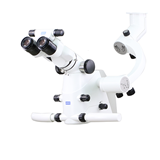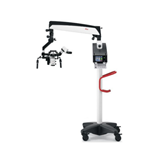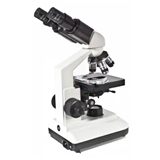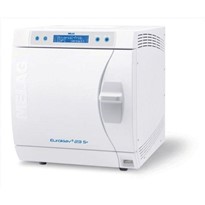As a dentist, the ability to see every detail is crucial for accurate diagnosis and effective treatment. Below we have provided a summary to help dental professionals choose which tool best suits their needs.
LOUPES
Worn like spectacles or mounted on a headband, loupes typcially offer 2x to 6x magnification. Their simplicity and ease of use make them popular in many practices.
Advantages:
- Portable: Lightweight and easy to carry.
- Ease of Use: Simple to wear and require minimal training.
- Cost-Effective: An affordable option for many dental professionals.
Limitations
- Magnification: Generally, they offer lower magnification than microscopes.
- Fixed Focus: Maintaining a specific working distance is crucial for a clear image with loupes, restricting movement during procedures.
- Depth of Field: The area that appears in focus is limited, requiring frequent adjustments.
DENTAL MICROSCOPES
Dental microscopes are designed for high magnification and illumination. Typically they are mounted on a stand or ceiling and offer adjustable magnification levels, often ranging from 4x to 25x or higher.
Advantages:
- High Magnification: Microscopes provide significantly higher magnification than loupes.
- Superior Illumination: Powerful light sources within the microscope deliver bright, shadow-free illumination of the treatment area.
- Adjustable Focus and Magnification: The ability to adjust both focus and magnification allows for greater flexibility and precision.
- Enhanced Ergonomics: Microscopes can be positioned to promote an ergonomic working posture, reducing physical strain during long procedures.
- Documentation Capabilities: Many microscopes come with integrated cameras, enabling high-resolution image and video capture for documentation, patient education, and case presentations.
Limitations
- Investment: Dental microscopes are more expensive which can be a barrier for small practices.
- Training: Operating a dental microscope requires training and practice to become proficient.
- Fixed Position: Unlike loupes, microscopes are stationary, limiting their use to specific workstations within the clinic.
CHOOSING THE RIGHT TOOL FOR YOUR NEEDS
The ideal choice between loupes and a dental microscope depends on various factors, including the type of procedures you perform, the level of detail required, and your practice's budget.
As a dentist, the ability to see every detail is crucial for accurate diagnosis and effective treatment. And while both serve the purpose of magnifying the treatment area, they do so in different ways.
If you are considering adding a dental microscope to your practice or want to learn more, we are here to help!






-160x160-state_article-rel-cat.png)














